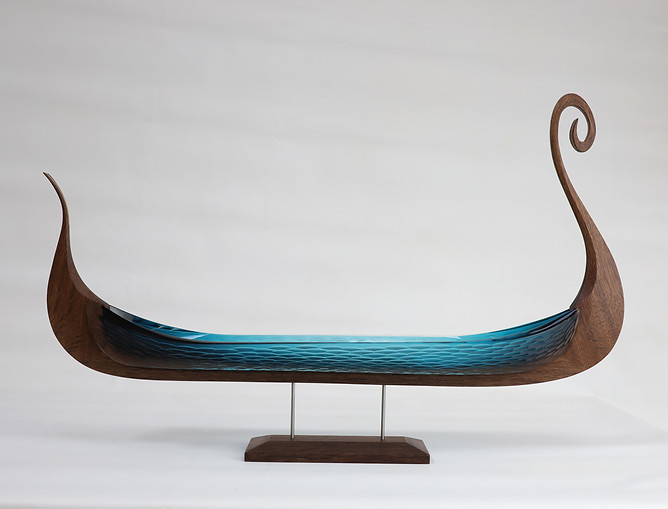Glass Made By The Sun

GLASSKIBE
Glass & wood
Our studio is to be found on the quayside in Hundested, North Zealand and has the most remarkable view of the sea and the fjords surrounding the town. The maritime history of Hundested and the imagery of Viking ships sailing past have inspired us in our work; together with cabinetmakers Egeværk we have combined two masterful crafts in an innovative collaboration; a series of sculptures called ”Glasskibe” - Viking ships in glass and wood. Every ship is unique in colour, pattern and wood work and are all given a name from Norse mythology.

Galleries
The Glasskibe project began in 2016, and the Glasskibe in glass and wood became an overnight success. Just like the original Viking ships, our Glasskibe travel wide and far, and are sold to collectors from all over the world.They are exhibited at a selection of galleries in England and in the United States.





Process
Hulls made of glass
Each hull starts life as molten glass that is shaped by hand and blown by mouth. When cold, each piece is cut and ground by means of an ancient Italian technique called “Battuto”. The process requires masterful glasswork and ensures that two hulls are never be the same.
Andrew's Battuto
After careful selection, a “bubble” of blown glass is split into two similar pieces and processed by hand to form a hull using the Battuto technique. This is a painstakingly careful process, and every hull develops its own unique character. The extraordinary patterns are reminiscent of how the planks of Viking ships were crafted.
Keel construction
When the hull is finished, a meticulous collaboration between the glass artists and the cabinetmakers from Egeværk begins. Since every hull is unique, every keel must be crafted accordingly. Careful drafting and fitting are required for each ship. The keels are made of oak – a must in maritime crafts due to its hardy nature. The strong wood is carefully worked until completely perfect and smooth as silk. At the end of the process the hull and the keel are joined, and the ship is ground and polished for the last time. The details vary from ship to ship – as does the overall character of each ship.



